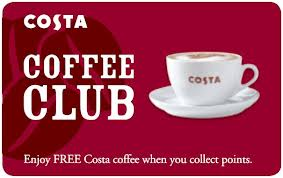What To Do With All Those Loyalty Cards!
No self-respecting service firm these days would be seen without a a loyalty card scheme! Of course, supermarkets have had them for years and generally use them very well but now wine merchants, beauty salons, coffee shops and the like use them as well. So is it worth stuffing our wallets with more of them and how can we get the best value out of these cards?

At their most basic, loyalty schemes are an attempt by companies to try to retain their best customers by providing them with rewards for their custom. So for example, your local coffee shop might stamp your paper card each time you use it and give you every 7th coffee free. If you can still find that kind of scheme, take it – it is a good one. You get a real, tangible benefit and you do not have to give any information in exchange. More frequently brands like Costa will sign you up (requiring personal details) for a fancy plastic card and offer you points each time you shop. But figuring out how much these points are worth needs a little work and as we know most customers never bother with that kind of effort. In the UK, Costa offers five points for each £1 spent with the cheapest Americano costing £1.95. 100 points equates to £1 or 1p per point. Leaving aside the possibility of double point promotions that means you would need to buy 39 Americanos to get one free!!!! And you have given them your information for this privilege!
In this era of big data, information is gold and companies continue to get better at using it. Tesco was a trail blazer in this area, showing how loyalty card information could be used to get a very accurate picture of what customers bought allowing for much more efficient marketing spend and much more tailored offerings. Today, supermarkets are interested not just in what you spend with them but what you spend elsewhere. For example, if they provide your debit/credit card data to analytics firms, they get an insight into your spend with competitors and in related product areas. And while this might make you uncomfortable, it does have an upside. The best offers usually get sent to those customers that the firm thinks is defecting or spending less in an effort to lure you back. So if you really want to mess with the data scientist’s head, have two cards for the same supermarket. They will think you are spending more elsewhere and send you better offers. And that’s no joke!!!
Related Articles






 John Fahy
John Fahy